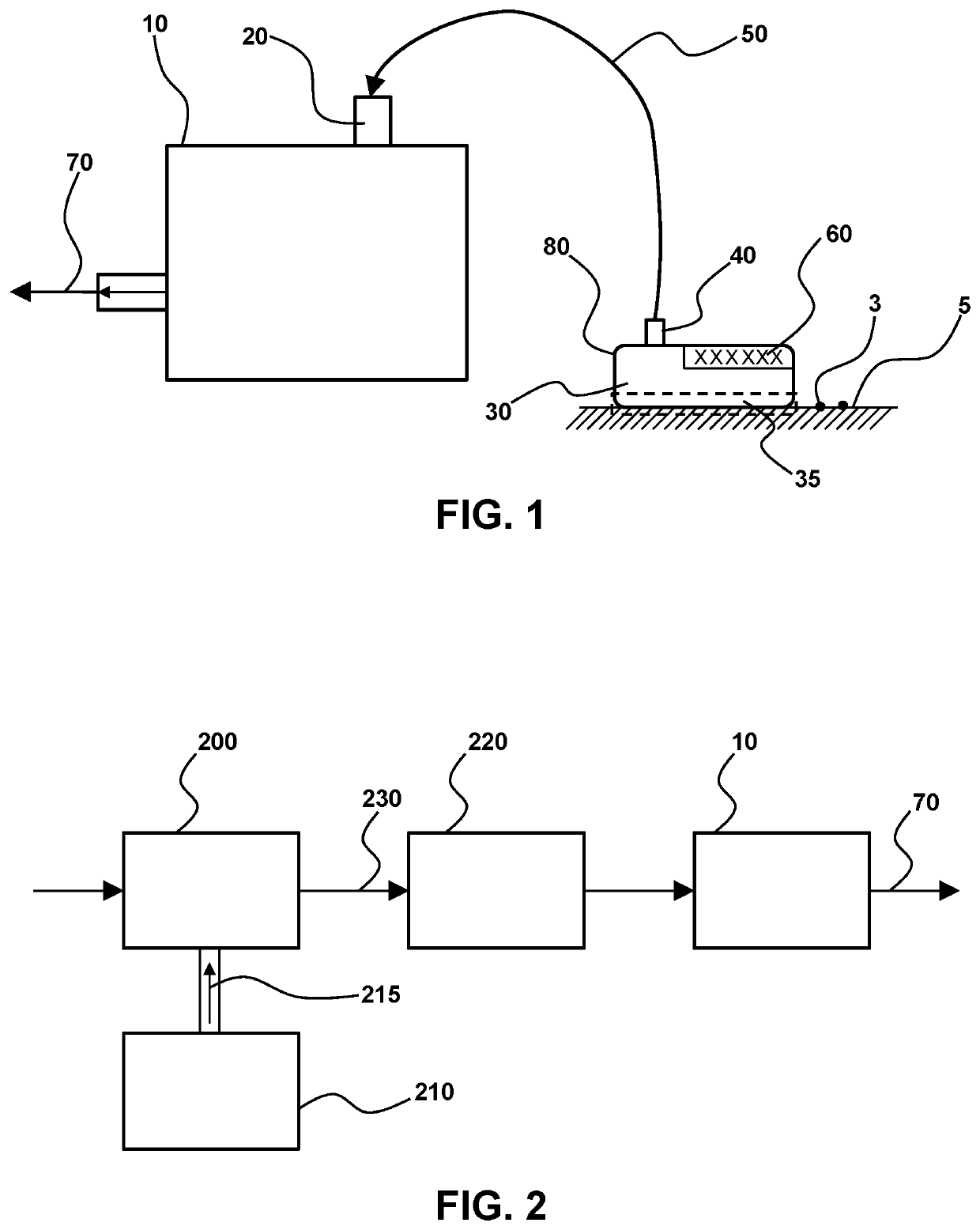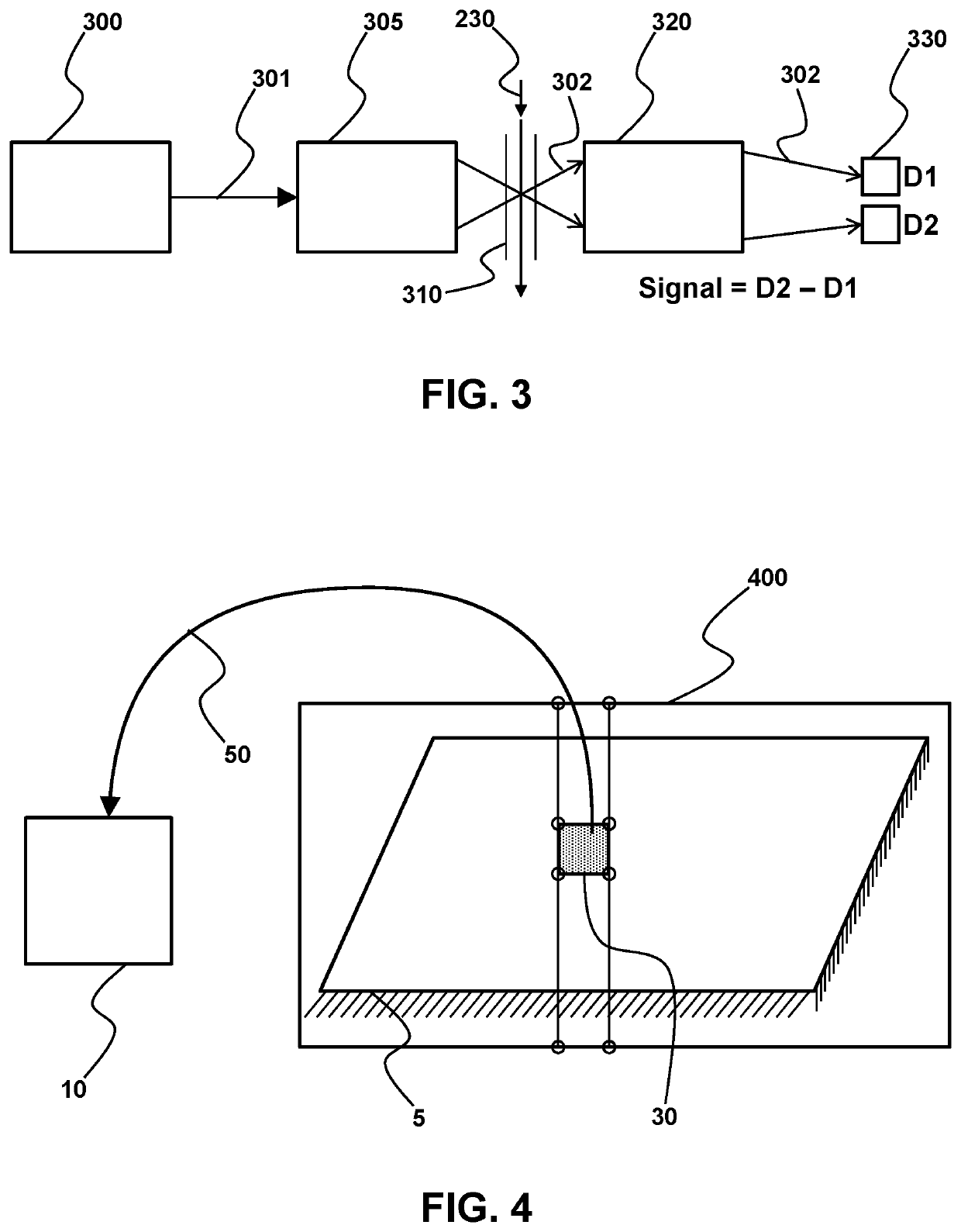Detecting nanoparticles on production equipment and surfaces
- Summary
- Abstract
- Description
- Claims
- Application Information
AI Technical Summary
Benefits of technology
Problems solved by technology
Method used
Image
Examples
example 1
[0045]This example demonstrates a condensation particle counter with an attached ejection and sampling device (e.g. a sample puck or wand).
[0046]Described herein are systems and methods for monitoring of particles adhering to surfaces by adapting a condensation particle counter with a sample puck. The device generates a metered flow of filtered clean air and delivers it to the sample puck for dislodging particles from a surface. The resultant air stream with dislodged particles is then pulled from the sample puck into the condensation particle counter with a vacuum system. The vacuum system may utilize a matching flow rate to the dislodging flow rate. As particle size reduces, electrostatic and stiction characteristics make the particles progressively harder to eject from the surface for potential collection and counting. More aggressive particle removal techniques may be used to effectively remove them from surfaces. Some example removal techniques include: Metered air flow; Therma...
PUM
 Login to View More
Login to View More Abstract
Description
Claims
Application Information
 Login to View More
Login to View More - R&D
- Intellectual Property
- Life Sciences
- Materials
- Tech Scout
- Unparalleled Data Quality
- Higher Quality Content
- 60% Fewer Hallucinations
Browse by: Latest US Patents, China's latest patents, Technical Efficacy Thesaurus, Application Domain, Technology Topic, Popular Technical Reports.
© 2025 PatSnap. All rights reserved.Legal|Privacy policy|Modern Slavery Act Transparency Statement|Sitemap|About US| Contact US: help@patsnap.com


